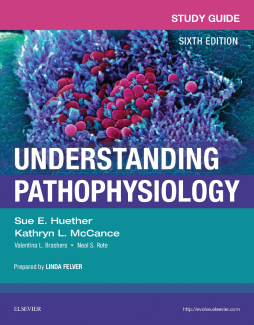
BOOK
Study Guide for Understanding Pathophysiology - E-Book
Sue E. Huether | Kathryn L. McCance
(2016)
Additional Information
Book Details
Abstract
Get the review and application tools you need to master difficult pathophysiology concepts! Designed to be used with the Understanding Pathophysiology, 6th Edition textbook, this extensively revised study guide utilizes a wide variety of engaging chapter activities, including application-based case scenarios and thousands of interactive questions, to help you easily integrate and apply pathophysiology information to clinical practice. New features of this study guide edition include nearly 30 new case scenarios, Teach These People About Pathophysiology questions, active headings, and more images from the main text. As with previous editions, answers to all questions can be found in the back of the study guide.
- Close alignment with format of the main text enables users to go back and forth between the resources with ease.
- Answer key found in the back of the study guide offers one place for users to check answers and evaluate progress.
- NEW! Over 2,650 interactive questions in a variety of formats are used throughout the study guide to help users truly master and apply high-level pathophysiology content from the main text.
- A wide variety of engaging chapter activities reinforce the application of pathophysiology concepts through: matching definitions, choosing correct words, completing sentences, categorizing clinical examples, explaining pictures, describing differences, and teaching others about pathology.
- NEW! Teach These People about Pathophysiology questions pose questions directly from the patient’s point of view.
- NEW! 30+ case scenarios feature brief cases with short answer style questions to provide real-world examples of how content would be used in the clinical setting.
- NEW! Active headings carry more impact in breaking up question types with language such as "Match these Definitions" instead of "Matching" or "Respond to these Clinical Situations" instead of "Short Answer".
- NEW! Nearly 70 images from the main textbook are incorporated and used in "Explain the Pictures" and "Draw Your Answers" questions to help engage users with visual learning.
